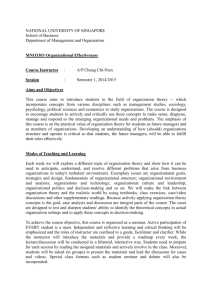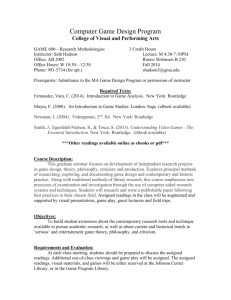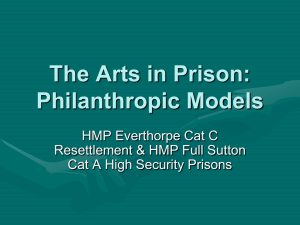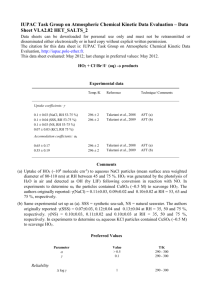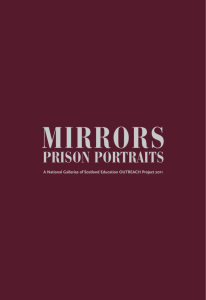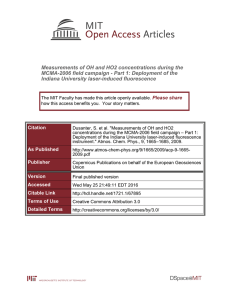INT 256 - University of Maine
advertisement
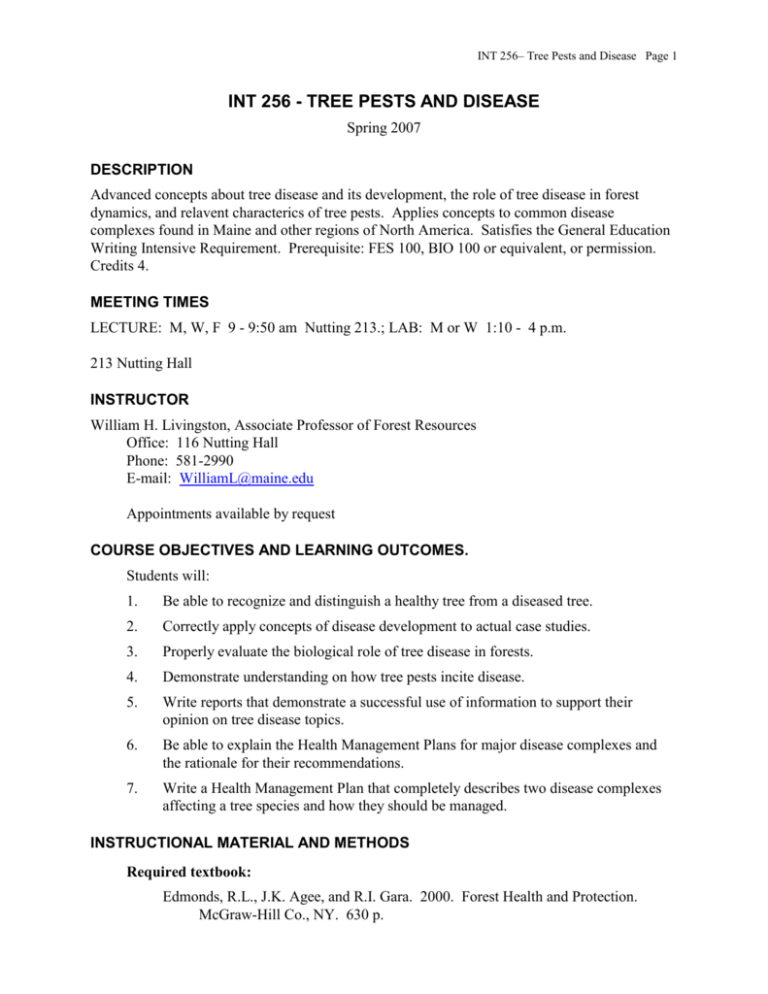
INT 256– Tree Pests and Disease Page 1 INT 256 - TREE PESTS AND DISEASE Spring 2007 DESCRIPTION Advanced concepts about tree disease and its development, the role of tree disease in forest dynamics, and relavent characterics of tree pests. Applies concepts to common disease complexes found in Maine and other regions of North America. Satisfies the General Education Writing Intensive Requirement. Prerequisite: FES 100, BIO 100 or equivalent, or permission. Credits 4. MEETING TIMES LECTURE: M, W, F 9 - 9:50 am Nutting 213.; LAB: M or W 1:10 - 4 p.m. 213 Nutting Hall INSTRUCTOR William H. Livingston, Associate Professor of Forest Resources Office: 116 Nutting Hall Phone: 581-2990 E-mail: WilliamL@maine.edu Appointments available by request COURSE OBJECTIVES AND LEARNING OUTCOMES. Students will: 1. Be able to recognize and distinguish a healthy tree from a diseased tree. 2. Correctly apply concepts of disease development to actual case studies. 3. Properly evaluate the biological role of tree disease in forests. 4. Demonstrate understanding on how tree pests incite disease. 5. Write reports that demonstrate a successful use of information to support their opinion on tree disease topics. 6. Be able to explain the Health Management Plans for major disease complexes and the rationale for their recommendations. 7. Write a Health Management Plan that completely describes two disease complexes affecting a tree species and how they should be managed. INSTRUCTIONAL MATERIAL AND METHODS Required textbook: Edmonds, R.L., J.K. Agee, and R.I. Gara. 2000. Forest Health and Protection. McGraw-Hill Co., NY. 630 p. INT 256– Tree Pests and Disease Page 2 Recommended references: Adams, K.B., D.C. Allen, P.D. Manion, and L.P. Abrahamson. 1995. The Stewardship of Northern Hardwoods: A Forest Owner’s Handbook. SUNYESF, Syracuse, NY. 83 p. Skelly, J.M., et al., editors. 1987. Diagnosing Injury to Eastern Forest Trees. Agric. Inform. Serv., Coll. Agric, Penn. State Univ. and USDA For. Serv. 122 p. Web Site. There is a web site for the class at: http://www.umaine.edu/fes/Classes/int256/home/default.htm/ The web site contains class messages, files for lecture notes, links to required readings, recordings of lectures, previous exams, and some of the handouts. E-Mail. Each student will be asked to provide the instructor an e-mail address that can be used during the semester. E-mail will be used for sending questions to and messages between the instructors and students. Lecture Readings and Recordings. Copies of the readings not from the textbook are available on-line. The readings are required. Lecture recordings are also on the web site and need to be viewed prior to class. Class Activities At the start of each class period, the instuctor will describe an activity (e.g., anwer questions, respond to a case study, identify characteristics of a tree pest) that students need to complete in groups of 2 or 3. After 15 to 30 minutes, the written responses will be given to the instructor. An open discussion will follow concerning acceptable responses to the assignement and anwering questions as needed. The process will be repeated until the end of the class period. Written Reports. Questions concerning the recorded lecture material and readings will be given at the start of the second and fourth weeks of the semester and are due one week later. You must state a clear position (thesis) on a tree disease topic, and then use the rest of the report to critically analyze your position. Assignments will be 4-5 pages long, double spaced, and will be evaluated on correct usage of terms and concepts presented in the readings, recordings, and class activities. How reports will be graded is indicated in the table at the end of the syllabus. Reports turned in after the due date will be marked down 10 percent of the total points for each day beyond the due date. You are encouraged to discuss your reports with other students, but each student must write his or her own paper. Additional credit can be earned on graded reports by rewriting the assignment and submitting the revised draft within one week after receiving the graded first draft. You can INT 256– Tree Pests and Disease Page 3 improve your grade by up to 10% (1 letter grade). Students earning less than 75% of the points must revise their papers in order to receive full credit. Failure to revise these papers will result in a 0 for the assignment. Exams. Two written exams are scheduled. Questions will require short, written responses and will cover material from readings, recordings, and class activities. Copies of previous exams will be made available on the class’s web site. There will be a final exam given during final exams week. The exam will be divided into two parts. The first part will have questions over material covered since the second exam and is worth 100 points. The second part covers material from the entire class and is worth 100 points. The exam format is the same as that described for the first two exams. Semester Paper. The objective of the semester paper is to utilize knowledge concerning trees, insects, fungi, principals of disease, and principals of integrated pest management to develop a Tree Health Management Plan for improving and maintaining the health of a forest. You will develop the plan through four assignments over the course of the semester. LABORATORY. In the first 3/4 of the semester you will learn to identify important groups of insects, fungi, and associated diseases. During the last 4 weeks, labs will be outside. A collection of insects, fungi, and associated diseases is required. Grading will be based on weekly descriptions, quizzes, and the collection. COURSE GRADING. Laboratory Weekly Descriptions 9% Weekly Quizzes 8% Collection 8% Total 25% Lecture Weekly written assignments 9% Exam 1 12% Exam 2 12% Exam 3 (finals week) 12% Comprehensive (finals week) 12% Total 57% INT 256– Tree Pests and Disease Page 4 Semester Paper Section drafts 10% Final Paper 8% Total 18% CLASS SCHEDULE Week 1 Basic Concepts of Tree Health & Disease Week 2 Health Management Plans, Forest Disease Week 3 Introduce Semester Paper; review available literature; begin literature search, Fungi & Infectious Disease Week 4 Entomology and IPM Week 5 Review and Exam Week 6 White Pine Health Management Plant (HMP): Blister Rust, Weevil, Decline Week 7 American Chestnut HMP: Blight:| American Elm HMP: Dutch Elm Disease, Elm Yellows Week 8 Spruce/fir HMP: Spruce Budworm, Spruce Beetle, Decay, Balsam Woolly Adelgid Week 9 White Oak HMP: Gypsy Moth; Armillaria Root Disease; American Beech HMP: Beech Bark Disease Week 10 Loblolly Pine HMP: Fusiform Rust, Southern Pine Beetle Week 11 Douglas Fir HMP: Dwarf Mistletoe, Phellinus Root Disease; Pacific Oaks HMP: Sudden Oak Death Week 12 Eastern Hemlock HMP: Woolly Adelgid, Drought Stress; Week 13 White Ash HMP: Emerald Ash Borer; Ash Yellows Week 14 Review COMPLETION OF WORK To earn credit for this class, all work must be completed. If any assignment has not been completed, then an incomplete (I) will be given. The work must be completed by the 10th week of the following semester or the grade will automatically be converted to a fail (E). Any assignment turned in late will lose 10% of the grade value for each day late unless lateness is due to an excused absence. DISABILITY NOTICE If you have a disability for which you may be requesting an accommodation, contact Ann Smith, Director of Disabilities Services, 121 East Annex, 581-2319, as early as possible in the term. INT 256– Tree Pests and Disease Page 5 STUDENT BEHAVIOR Every student in the class is expected to be familiar with the University's Student Conduct Code (http://www.umaine.edu/handbook/) part of which states, "It is expected that students will conduct their affairs with proper regard for the rights of others and of the University. All members of the University community share a responsibility for maintaining an environment where actions are guided by mutual respect, integrity, and reason." If the instructor believes that a student's behavior is violating this code or other codes in the Handbook, the instructor has the option to ask that the behavior cease and will seek advice from the appropriate office on campus on how to deal with the student's behavior. Academic dishonesty includes cheating, plagiarism and all forms of misrepresentation in academic work, and is unacceptable at The University of Maine. As stated in the University of Maine’s Student Conduct Code, plagiarism (the submission of another’s work without appropriate attribution) and cheating are violations of the code. An instructor who has probable cause or reason to believe a student has cheated may act upon such evidence, and should report the case to the supervising faculty member or the School Director for appropriate action. If you have questions about this policy or want examples on what is acceptable and unacceptable behavior, please speak with the instructor. INT 256 – Tree Pests and Disease Page 6 Grading Table for INT 256 Written Assignments Name: ______________________________ Assignment ____________________________ Content (67 pt) Poor Average Good XX XX XX Score Introduction: Sets context, focus statement XX Body: Covers subject, substantiated information XX Conclusion: Important points XX Explained in own words XX Relevant information and facts from presentations, handouts, readings, own notes; supports position XX Style (33 pt) XX XX XX Organized well - logical flow of ideas, paragraph objectives, relationship between paragraphs XX Proper grammar and spelling: Use of words, punctuation, sentence structure, spelling XX TOTAL SCORE (20 PT) XX XX XX



